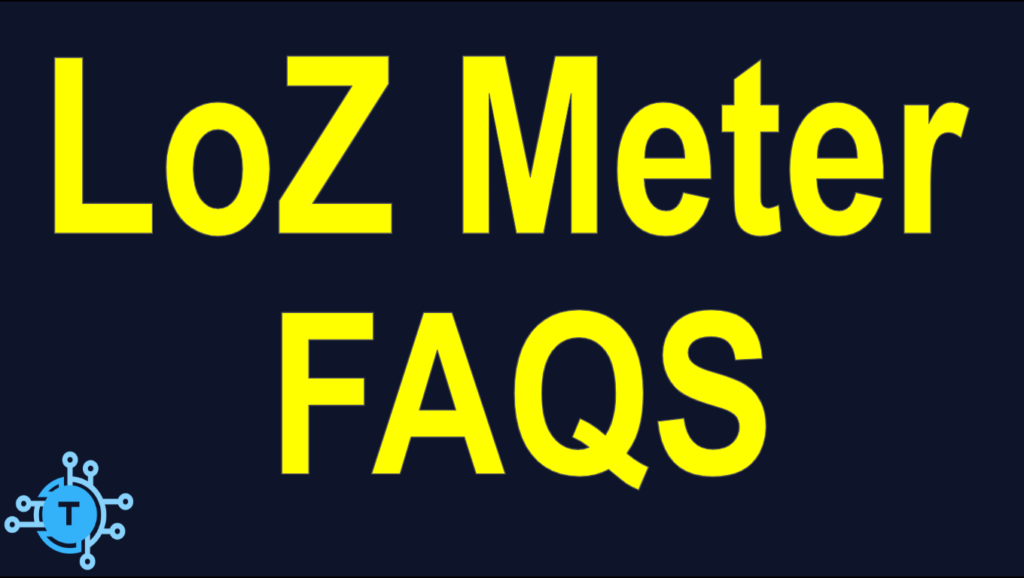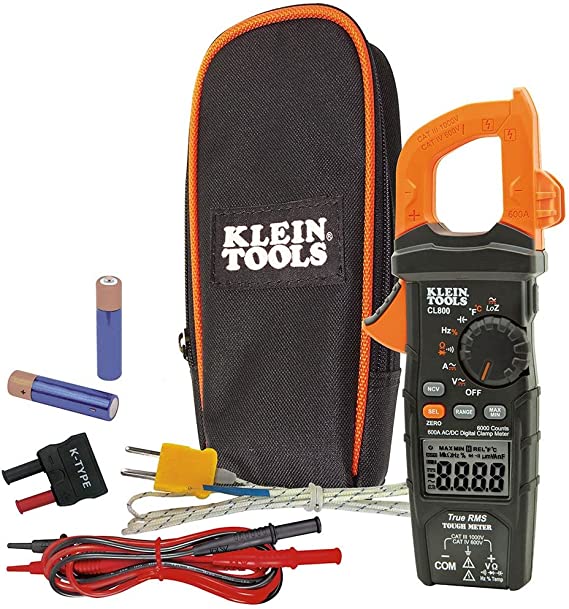
Frequently Asked Questions about LoZ Meters is another in a series of FAQS about electricity and electronics that are oriented toward Appliance Technicians and HVAC Technicians.
Frequently Asked Questions about LoZ Meters
Q. What is a LoZ meter?
A. It is a multimeter that has the option for a low input impedance when measuring voltage. Using such a meter introduces a load to the circuit under test.
Q. What is example of using a LoZ meter?
A. An electric dryer has no heat. You test L1 to L2 (the which supplies the heat circuit) using a traditional meter and read 240v. However, using LoZ mode, you read 205v. This means that by putting a slight load on the circuit, the voltage has dropped, which implies an upstream loose connection that requires further investigation. The dryer heat circuit puts a heavy load on the heat circuit, which likely dropped the voltage to near zero volts. Here is a line-voltage testing flow-chart using a LoZ meter (CLICK HERE).
Q. What is impedance?
A. Impedance can be thought of as “AC resistance”. Like resistance, it is the opposition to current flow, but applies to AC circuits. It also includes the opposition to current flow that is presented by capacitors and inductors.
Q. Why would I want to introduce a load to the circuit under test?
A. Doing so can cause ghost voltages to disappear and compromised voltage sources to reveal themselves.
Q. What is a ghost voltage?
A. It is a voltage that is present on an undefined circuit point due to being in proximity to wiring that has a voltage potential on it. This proximity can cause capacitive coupling to occur, which can cause a charge to build up on the wire. You can think of it almost as static electricity. It has no capacity to supply current, so when you put a load on it, it disappears. Without a load, it can read as a voltage that can confuse the observer into thinking it is valid. Unwanted voltage potentials can also be present due to high resistance leakage from a live wire to the undefined circuit point.
Q. What is a compromised voltage source?
A. It is a source of voltage that should read a voltage under load, but drops when that load is applied. It is typically because of an upstream loose connection. An example is when an electric dryer won’t heat because L2 has an upstream loose connection of 500 ohms. When you turn the dryer on, the 10 ohm (load), causes L2 to drop to a few volts. However, when you test L2 with your traditional voltmeter setting (essentially no load), you read 240v w/r to L1. A pictorial example of this can be found in this blog: https://techcircuit.org/how-lowz-works-and-why-its-useful/
Q. What kind of a “load” does a LoZ meter put on the circuit being tested?
A. The Klein, CL800, for example puts approximately a 3K ohm load on the circuit. It uses a thermistor, actually, in case you leave it connected to a voltage source. This thermistor increases in resistance (PTC) as it heats up, thereby reducing its heat output, and protecting the meter from damage.
Q. Why would a 3K ohm load be useful when reading voltage?
A. It would be extremely useful. It will cause ghost voltages to essentially disappear, and compromised voltage sources to reveal their compromised state. It causes a voltage divider to occur, where some or all of the voltage appears across the ghost voltage’s or compromised voltage source’s high impedance and leaving less available across 3k impedance. This reduced voltage reading indicates a problem with the subject voltage source. More about that at this blog here: https://techcircuit.org/how-lowz-works-and-why-its-useful/
Q. Does LoZ only apply to the AC voltage function?
A. Not necessarily. Some meters, such as the Klein CL800 have a LoZ setting for DC voltage.
Q. Should I just use LoZ all the time?
A. It can be used most of the time when testing AC voltage. However, when probing around circuits that have high resistances or impedances, it isn’t appropriate and can actually change such a circuit’s operation or damage it. When using the DC voltage setting, it should be used more sparingly, and when probing abound circuit boards, it should probably not be used because of the chance that you will effectively change the circuit you are testing. Here is an article that details four instances where LoZ usage is NOT appropriate: https://techcircuit.org/when-not-to-use-a-loz-meter/
Q. If I want to understand the theory behind LoZ, where can I find this information.
A. For our comprehensive article on LoZ and its theory, click here: https://techcircuit.org/how-lowz-works-and-why-its-useful/
Recommended LoZ Meter
The Klein CL800 is a great all-around meter for field techs. It is comprehensive – including just about every feature you’d want in the field, including LoZ testing for AC and DC volts. Producing and writing such articles takes much time. I do make a commission of of any sales purchased through the following image, and do appreciate your support.

To donate to the Tech Circuit – CLICK HERE
For additional electrical and electronics learning material for field techs, visit our homepage at http://www.TechCircuit.org or our Facebook group at https://www.facebook.com/groups/746823709133603 or our YouTube Channel
at https://www.youtube.com/@TheTechCircuit
TC
We are a participant in the Amazon Services LLC Associates Program, an affiliate advertising program designed to provide a means for us to earn fees by linking to Amazon.com and affiliated sites.
